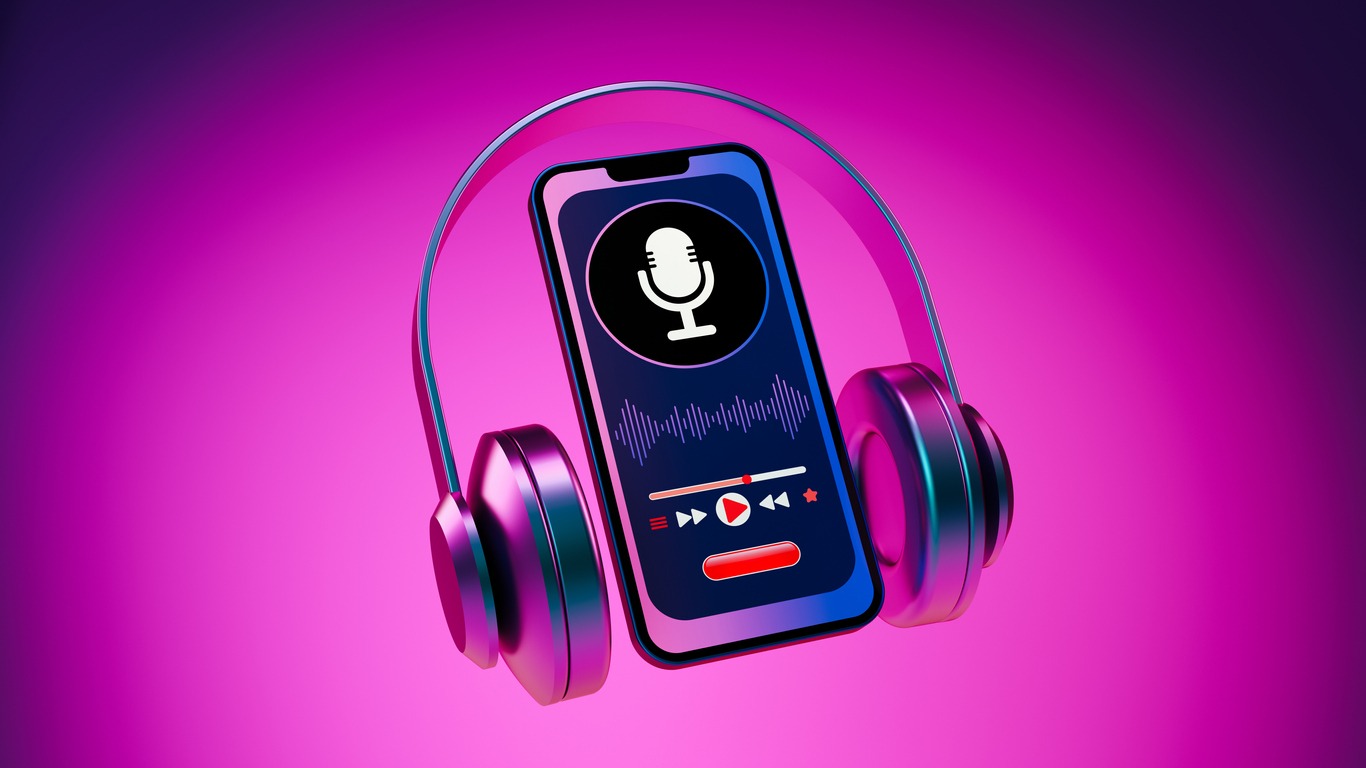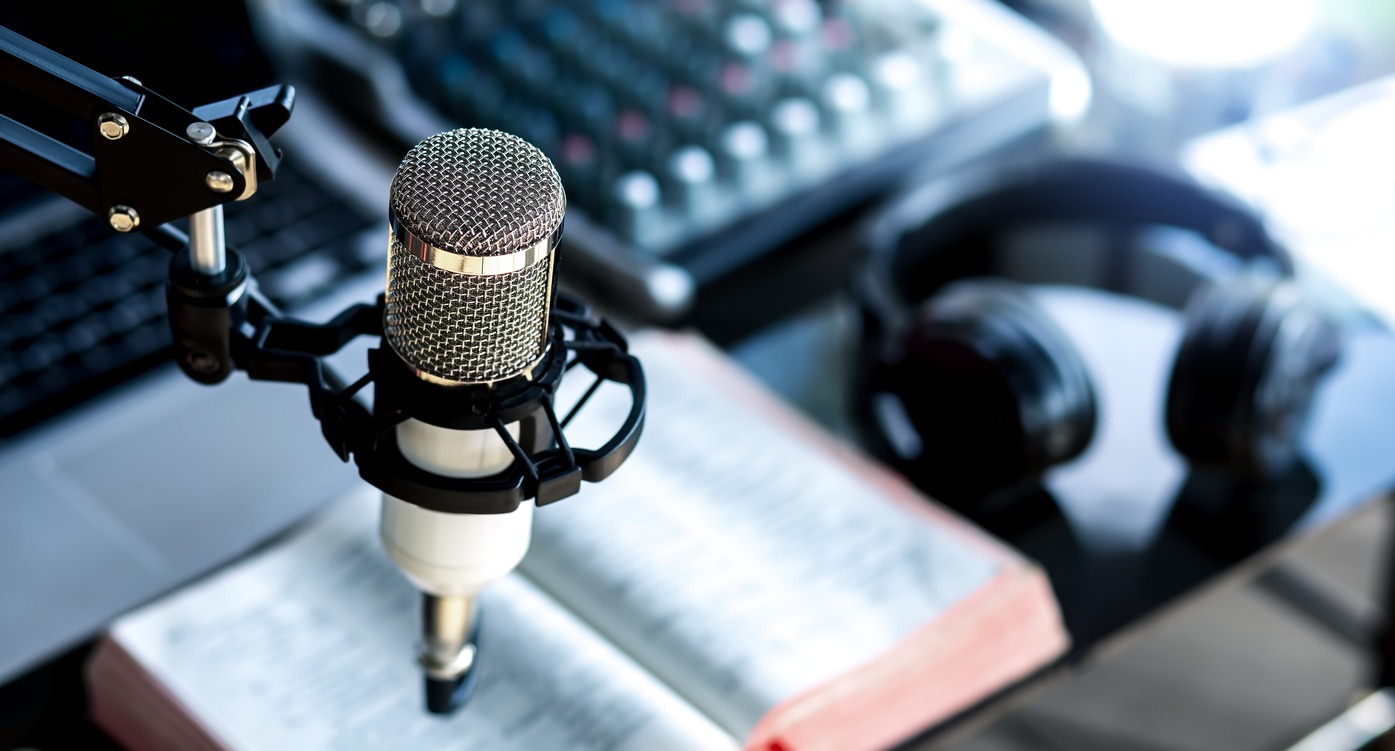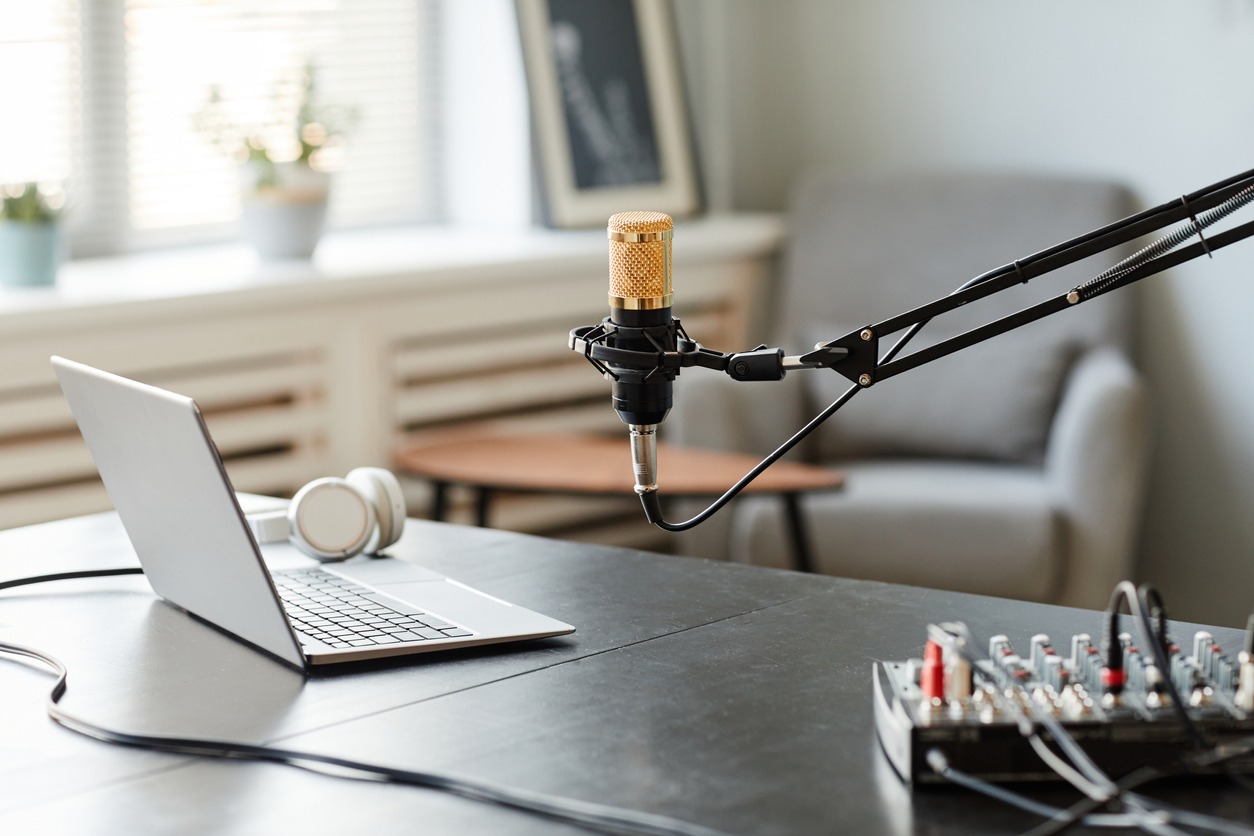You’ve got ideas, you’ve got passions, and you’re eager to share your thoughts with the world. Podcasting is an excellent way to do just that. However, a little upfront planning can go a long way, so before you hit the record button, consider these important steps for creating your podcast.
What Exactly Is a Podcast?
In a technical sense, podcasting is a digital media format that involves the creation and distribution of audio in an episodic series over the Internet. The term “podcast” is a combination of “iPod,” Apple’s portable media player, and “broadcast.” However, podcasts are not limited to the iPod or any specific device – they can be played on a wide range of computers, smartphones, and other media players.
In a nutshell, a podcast is like a radio show you can listen to whenever you want. It’s an audio series, usually with one or more hosts, where people talk about all sorts of topics – from commentaries about pop culture to gripping true crime stories to the latest anime episodes.
How to Start Podcasting?
1. Establish the purpose of your podcast
First and foremost, what’s driving you to create a podcast? Are you a freelancer, a business, or a marketing manager? If so, podcasting is a fantastic way to establish authority or foster a community. Through your podcast, you can offer valuable and entertaining content to your customers and target audience. It’s a trust-building platform where you can nurture those passionate superfans every company dreams of having.
However, podcasting isn’t exclusively a content marketing strategy for businesses. You might be approaching it as a creative outlet. This could involve producing the show during your free time, focusing on a topic you’re passionate about, be it K-drama or vegan baking. In this case, you still have a “why” behind your podcast, which can be just as significant as a company looking to attract new customers.
So, the bottom line here is this: unless you answer the “why” question, you won’t be well-prepared to design podcast content that aligns with your goals and objectives. Think of it as laying the groundwork for your metaphorical house; it’s worth putting in some extra thought and effort to get it right!
2. Define your podcast’s niche or topic
When you start promoting your podcast, people will naturally ask, “What’s it all about?” After determining your purpose, be clear about your focus and, ideally, choose a topic you’re already knowledgeable about or passionate about. Choosing a specific niche or topic may seem confining, but it’s a strategic move to help you create more focused content and build a loyal audience. It’s also a way to firmly establish yourself as an expert in that subject.
Select a topic that’s broad enough to sustain multiple episodes or seasons but specific enough to attract a particular type of audience. Evaluate this, and make a list of subtopics related to your topic. If you find yourself coming up with too many subtopics, it might be a sign that you should narrow down and become even more specific. Conversely, if you struggle to think of additional subtopic ideas, your topic might need to be broader.
Once you’ve settled on a topic, consider what unique insights or value you can bring to your listeners. Also, assess whether you can generate enough content around this topic. Sometimes, a topic that initially seems exciting might not yield enough episode ideas.
Lastly, think about narrowing down your topic. It’s essential to get specific rather than keeping it too broad.
For instance, instead of discussing “healthy eating” broadly, you could niche down to areas like nutrition fundamentals, specialized diets (e.g., paleo, gluten-free, vegetarian, vegan), meal planning, or mindful eating, among others.
3. Explore and check out existing podcasts
Before you start recording your inaugural episode, it’s a wise move to do a little research and see if there are any similar podcasts out there. You might discover that there are very few podcasts covering your chosen topic, or you could find that your niche is already bustling with podcasts. Regardless of the situation, this research can help you determine how to position your podcast in a way that makes it stand out.
4. Identify your target audience
One of the most crucial questions to address before starting your podcast is: who are you creating this for? Having a clear picture of your ideal listener will guide you in producing content that’s valuable and relevant.
If you’re approaching it from a business standpoint, let’s say you’re a personal trainer launching a health and fitness podcast. In this case, your target audience might be individuals interested in healthy eating, weight loss, exercise, or bodybuilding.
On the other hand, if you’re crafting a hobby-based show, let’s say it’s all about your passion for zombies and post-apocalyptic fiction, your target audience will consist of folks who share the same enthusiasm.
Try to pin down some basic details about your ideal listener, such as:
- Their age
- Their gender
- Where they live
- Their occupation or employment status
- Their social life
- Their aspirations, dreams, and struggles
- The types of media they already consume
- Whether they listen to other podcasts
- Their leisure activities
- Common challenges they face
- What knowledge do they wish to gain
The more precise you can be in answering these questions, the better. These insights will aid you in creating content for your initial episodes.
Do I Need an Existing Audience to Begin a Podcast?
This is a common question worth addressing before moving forward. Some individuals may already have a small following when they start a podcast. It could be linked to their business, brand, or personal profile, such as being a musician, former athlete, or author.
If you already have an audience related to something other than your podcast, it’s an excellent opportunity to establish the foundation of your podcast’s fan base, assuming your podcast is relevant to that existing audience. During the planning phase, you might even choose to survey your audience, asking about their challenges and what they’re currently struggling with. This input can shape your future content.
But if you don’t have an audience yet – don’t be scared. It’s the experience of the majority of podcast beginners! Please don’t let this deter you from launching your own show. Most podcasters start by speaking to an audience that’s yet to materialize, but if you plan and execute well, you can gradually grow your audience from scratch.
5. Generate episode ideas
Now that you’ve honed in on your chosen topic, it’s time to brainstorm some episode ideas. Delve into all the aspects of your topic. If, for example, your topic is outdoor adventure and survival, think about the various things your ideal listener might be curious about or might learn from. Here are a few examples of episode topics under this niche to get your creativity flowing:
Subtopics:
- Survival basics in the wilderness
- Hiking and camp gear reviews
- Outdoor cooking and food preparation tips
- Tips for navigating in the backcountry
- Entertaining stories about wildlife encounters
- Survival tips in extreme weather
- Amazing survival stories
- Features and reviews about national parks
A handy starting point for brainstorming episode subjects is to explore books and blogs related to your topic. Take a look at the table of contents in books; they can be a great source of inspiration!
6. Choose your podcast format
Podcasts come in various formats. Yours might be educational, a storytelling experience (whether nonfiction or fiction), a casual conversation about topics, or a series of interviews. You can either be the sole host of your podcast or share hosting duties with others. Here are some podcast formats to choose from:
a. Solo podcast
Your show can be a one-person act where you share stories or teach your audience something new.
When you’re the sole host of your podcast, you’ll carry the workload, especially in the beginning, unless you have a company supporting your show right from the start. You’ll be responsible for generating ideas, creating content, and handling the marketing.
Advantages:
- You have full control of the episodes.
- You can establish yourself as an authority on your subject.
- You have the freedom to make decisions on sponsorship and monetization without sharing profits.
Challenges:
- It can be intimidating, especially for novice podcasters.
- The main challenge is overcoming the feeling that you’re “talking to yourself” and realizing that you’re actually addressing your listeners.
- Since you have no team to be accountable to, it will be easier to quit if you suddenly lack inspiration, get busy, etc., so you need to be self-motivated.
b. Co-hosted podcast
A current trend in the podcasting world is people teaming up with friends, and sometimes even groups of friends or colleagues, to create shows.
Advantages:
- Recording with a co-host can help ease the nerves of speaking into the mic alone.
- It injects a lot of diversity into the show. Different people mean different viewpoints or stories to listen to, which can bring a wide range of listeners.
- It offers you someone to engage with, debate, or even share some good-natured banter. In some cases, the chemistry between co-hosts can result in an exceptional listening experience.
- It allows for division of labor regarding research, post-processing, editing, marketing, etc., so you don’t have to do everything yourself.
- You can share startup costs.
Challenges:
- Coordinating recording schedules with your co-host/s can be a bit of a juggling act.
- There might be a question of ownership that will arise.
- Splitting potential income can be a challenge or even a cause for conflict.
- All hosts must be committed or invested in the project – otherwise, there would be big decisions to make if one or more co-host loses interest or becomes unavailable in the future.
To avoid possible conflicts or issues in the future, you have to make a plan or agreement before embarking on a podcasting journey with friends. Here are the things to do:
- Determine how you’ll list the show’s hosts; will there be multiple hosts or a primary “main” host?
- Plan for situations where one of you might lose interest. Will you pause the show or introduce rotating guest hosts?
- Establish a financial plan, including how you’ll divide costs and share profits. Planning ahead will pay off if your show becomes profitable.
- Think about scenarios where one of you moves, or you want to record from different locations. This might require additional equipment and remote recording software.
- Assign responsibilities. Decide who handles tasks like editing, promotion, and other podcast production aspects to ensure a smooth workflow.
c. The Interview-Style Podcast
This podcasting style allows you to borrow the expertise or charisma of others. But to execute it well and draw listeners, you need to have good interviewing skills.
If you opt for the interview format, brainstorm potential guests and compile a list of individuals to reach out to. Create an extensive wish list for interviews; you never know who might say yes, and landing a high-profile guest can bring a larger potential audience to your show.
Advantages:
- It gives you opportunities to chat with your idols. An interview-style show lets you have conversations with individuals you’ve always admired.
- Guests often have their own followers who might tune in to the interview and become fans of your show. When executed well, this approach can significantly expand your audience.
Challenges:
- Mastering the art of interviewing takes practice, so it’s advisable not to approach A-listers in your field right away.
- You’ll need to continually seek out and approach potential guests, schedule interviews, and depend on others to show up (in-person or digitally).
- You’ll be highly dependent on technology to work seamlessly, especially if you’re recording an online interview.
Tips: Connect with fellow podcasters, bloggers, and vloggers to identify the best guests for your show. While networking, consider being a guest on other people’s shows. Not only does this keep you on the radar of potential guests, but it’s also an excellent way to promote your own podcast.
As you design your show, think about the subjects your guests can discuss. Once your podcast is up and running, start reaching out to and scheduling your interviewees.
If interviews are a significant part of your show, keep these points in mind:
- Use a podcast guest release form for each guest to protect yourself legally from potential issues.
- Plan interviews well in advance to accommodate busy schedules and avoid last-minute guest searches.
- Have a rough launch date in mind when interviewing guests so they know when their episode will be live.
- Batch several interviews at a time for more content and efficient recording.
- Ask your guests to help promote your show once their episode is live, and provide them with the necessary tools for easy promotion.
- If you’re new to interviewing, practice with friends and family before your first guest to build your skills and confidence.
d. Other podcast formats
In addition to the more common podcast formats, there are several others that might be a good fit for you. Here are a few examples:
- Roundtable: This format involves one regular host and multiple guests discussing a specific topic, creating a dynamic conversation.
- Documentary: In a documentary-style podcast, a narrator guides you through a series of interviews, conversations, and on-location recordings to paint a detailed and immersive picture.
- Docu-Drama: Combining elements of drama and documentary, this format offers educational content in an entertaining and engaging manner, providing both learning and entertainment.
7. Choose a name and establish a brand
Choosing a name for your podcast is a significant step. As you begin promoting your show and reaching out to potential guests, they will not only ask about your podcast’s content but also its name. Building brand awareness early on will make people more familiar with your podcast when it’s time to go live.
Having a name for your show sooner rather than later will aid in making other branding decisions. For instance, you’ll need to include your podcast name in your intro and outro, secure a domain name, create a podcast page on your website, and claim social media handles.
To choose a name for your podcast, remember these tips:
- Unless your show is location-based, avoid including cities, states, or countries in the name.
- Your podcast’s name should connect with your subject matter and be clever or memorable.
- Be cautious about naming your show based on current trends, as it might become obsolete when the trend fades.
- Take your time to choose a name, but don’t delay indefinitely.
- Podcast names should be easy to remember. Longer doesn’t mean better.
- Avoid using the word “Podcast” in your show’s title; it’s redundant and takes up valuable character space.
- Keep in mind that choosing a name isn’t a lifelong commitment; you can create a new show under a different name later if you wish.
Besides a podcast name, you’ll need to create your branding elements, which include cover art, color palette, and any custom design or audio work. You can create your cover art using free design tools like Canva or hire a professional graphic designer to bring your vision to life.
You also need to craft a concise and clear description that informs your audience about your niche, which you’ll use when sharing your podcast on platforms such as iTunes and Google Play.
8. Create an engaging podcast description
To give potential listeners a clear picture of your podcast, you’ll need to craft both a general overview and descriptions for each of your episodes. A podcast description, often referred to as a show summary, plays a pivotal role in shaping potential listeners’ perceptions of your show. It’s the most critical element that new listeners consider.
When writing your general overview for your podcast, aim for clarity and brevity while addressing these fundamental questions:
- What’s the main topic of your podcast?
- Who’s the intended audience?
- What can listeners anticipate hearing?
- Why should people tune in? What value will they gain?
- How frequently and when do you release new episodes?
- How can listeners connect with you beyond the podcast?
9. Craft your podcast’s intro and outro
The intro is typically a 15 to 30-second audio clip that kicks off your show. It often includes music and mentions the podcast’s name and the host. Some hosts use the same intro for every episode, while others change it up by season or create a new intro for each episode they produce.
The outro signals the end of your show and can include a call-to-action, references to your show’s social media accounts, or a website where listeners can find more about you.
For custom audio elements like intro or outro music, you can collaborate with a professional musician or studio. Alternatively, you can source sounds that match your style from a library of royalty-free music.
If you plan to use music in the intro and/or outro, it’s crucial to find royalty-free music or create original compositions. Thankfully, you can find many sources of royalty-free music on the Internet. Before adding any music to your podcast, be sure to research its copyright status to avoid potential legal issues, fines, or having your podcast taken down.
10. Get your recording equipment ready
You can likely record audio using the computer, tablet, or phone you already own. At the very least, you need a computer with a USB microphone and an internet connection to start recording a podcast. But for a higher-quality and clearer sound, many podcasters recommend investing in a separate podcast microphone. These microphones can range from as low as $20 to as much as $10,000.
Sound quality matters a lot in podcasting. Background noise and unclear voices can turn listeners away. Given the abundance of podcasts available, you want to make it easy for people to enjoy yours, so it’s best to invest in a high-quality microphone instead of simply using your computer’s built-in microphone.
Additional podcasting equipment to consider includes a pop filter to reduce plosive sounds and a boom stand or microphone stand for added convenience.
11. Prepare your audio editing software
To record and edit your podcast, you’ll need software. If you prefer not to spend on podcast editing software, there are free options available. GarageBand is a great choice for Apple device users, and Audacity is a free, high-quality option on any device. Alternatively, you can opt for more advanced, premium software like Adobe Audition, Logic Pro X, or Hindenburg Journalist. Alitu is another good choice – it’s specifically designed for podcasters, providing an easy audio recording and editing experience. It also offers its own hosting, making it easy to publish your podcast on platforms like Apple Podcasts and Spotify.
If you don’t feel comfortable editing your podcast or simply have no interest in doing so, you can outsource the task to a freelance podcast editor. You can find freelance editors on platforms like Fiverr, Upwork, Craigslist, or Facebook.
12. Script your podcast
Once you have your microphone and podcast editing software ready, it’s time to hit that ‘Record’ button. But what should you actually say during your podcast? This is where scripting comes into play.
When it comes to the content of the podcast episode itself, some podcasters like to prepare scripts in advance to have a clear idea of what to say, while others prefer a more spontaneous approach. The choice is entirely yours.
You don’t need a detailed essay that will contain what you say word-for-word for your episode. While this can be effective, it can be incredibly time-consuming, especially if you’re managing everything on your own and aiming to release episodes regularly. Also, reading from a script will easily sound like you’re reading, and let’s be honest about it – listening to someone recite a script can be a real snooze-fest.
Podcasting thrives on its intimate and conversational nature. It’s more like a friendly chat than a formal speech. So, better use bullet points outlining the topics you want to cover. With practice, this will become more comfortable.
13. Record your first episode
Now that you’ve got your equipment and content in order, it’s time to start the main event: recording an episode! Even if you decide to use a script, you may still need to take breaks, pause, re-record, or edit your audio to create a final, polished episode. Just like any skill, the more you practice, the better you’ll become. Podcasting itself is an art that improves with time and experience.
13. Create effective episode titles and summaries
Every episode you create should have a unique and descriptive title. Your episode titles should accurately represent the content discussed in that episode and, if applicable, mention the guest speaker’s name.
While it might be tempting to use clever or witty titles for your episodes, it’s often more strategic to opt for descriptive and accurate titles. This helps with your podcast’s SEO (Search Engine Optimization), making it easier for listeners to discover your podcast through search engines and podcast directories.
Avoid the mistake of giving your episodes dull and generic titles like “Episode 1” or “Episode 2.” Such titles won’t give potential listeners any idea of what to expect. Your goal is to entice them to click on one of your episodes.
Identify the core message of your episode. If there’s a key takeaway or solution discussed, let that guide you in crafting your episode title. This way, you provide a clear and compelling reason for listeners to engage with your content.
Now, after crafting the title, you also need a summary for each of the episodes you create. Make it enticing to make people curious and want to listen, but concise enough that you don’t give away too much information. Read other podcast synopses, and you’ll get an idea of what to do.
14. Transform your recording into a podcast
Once your recording is ready, the next move is to submit it to your preferred podcast platforms. To enhance your podcast’s discoverability, consider submitting it to a directory.
Some of the notable podcast directories to consider are:
- Apple (formerly iTunes)
- Spotify
- Stitcher
- Audible
- Google Podcasts
- iHeartRadio
Once your podcast is successfully uploaded to a directory, anyone using that directory can discover your podcast by searching for its title or relevant keywords.
15. Promote your podcast
Once your podcast is available for discovery and download, it’s time to let people know about it. One effective method for promoting your podcast is by utilizing social media platforms such as Instagram, Twitter, Facebook, and TikTok. If you already have an established following on these platforms, you can leverage your existing accounts to promote your podcast. If not, you can create new accounts specifically for promoting the podcast and connecting with your audience.
Conclusion
Podcasting is a dynamic and accessible medium that offers a plethora of opportunities for content creators. Whatever topic you want to focus on and whatever format you choose, the key is to engage your audience with compelling content. From crafting intriguing episode titles to promoting your podcast effectively, every step plays a crucial role. Remember that practice makes perfect, and the journey is just as rewarding as the destination.






